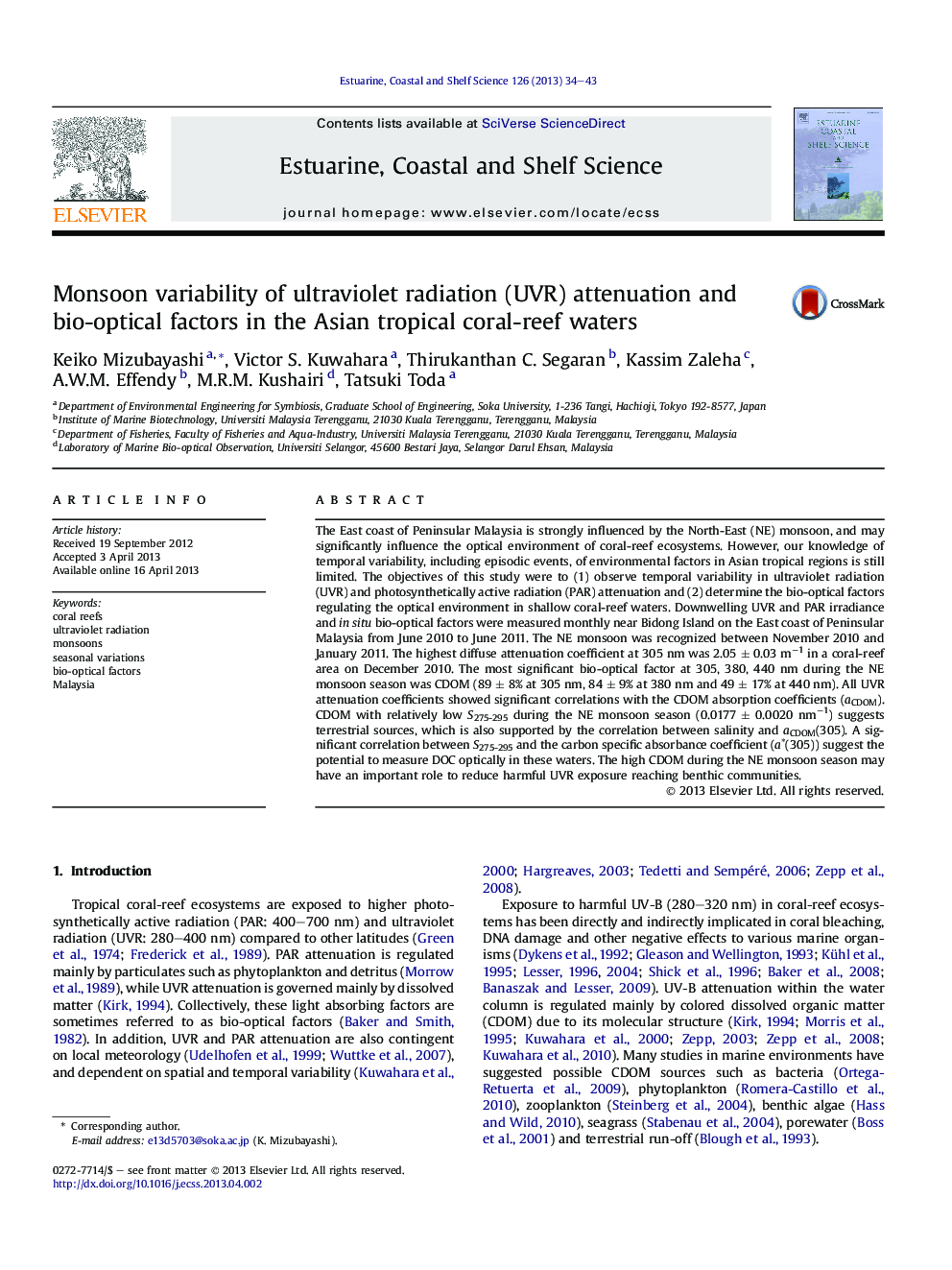| Article ID | Journal | Published Year | Pages | File Type |
|---|---|---|---|---|
| 4539892 | Estuarine, Coastal and Shelf Science | 2013 | 10 Pages |
The East coast of Peninsular Malaysia is strongly influenced by the North-East (NE) monsoon, and may significantly influence the optical environment of coral-reef ecosystems. However, our knowledge of temporal variability, including episodic events, of environmental factors in Asian tropical regions is still limited. The objectives of this study were to (1) observe temporal variability in ultraviolet radiation (UVR) and photosynthetically active radiation (PAR) attenuation and (2) determine the bio-optical factors regulating the optical environment in shallow coral-reef waters. Downwelling UVR and PAR irradiance and in situ bio-optical factors were measured monthly near Bidong Island on the East coast of Peninsular Malaysia from June 2010 to June 2011. The NE monsoon was recognized between November 2010 and January 2011. The highest diffuse attenuation coefficient at 305 nm was 2.05 ± 0.03 m−1 in a coral-reef area on December 2010. The most significant bio-optical factor at 305, 380, 440 nm during the NE monsoon season was CDOM (89 ± 8% at 305 nm, 84 ± 9% at 380 nm and 49 ± 17% at 440 nm). All UVR attenuation coefficients showed significant correlations with the CDOM absorption coefficients (aCDOM). CDOM with relatively low S275-295 during the NE monsoon season (0.0177 ± 0.0020 nm−1) suggests terrestrial sources, which is also supported by the correlation between salinity and aCDOM(305). A significant correlation between S275-295 and the carbon specific absorbance coefficient (a*(305)) suggest the potential to measure DOC optically in these waters. The high CDOM during the NE monsoon season may have an important role to reduce harmful UVR exposure reaching benthic communities.
